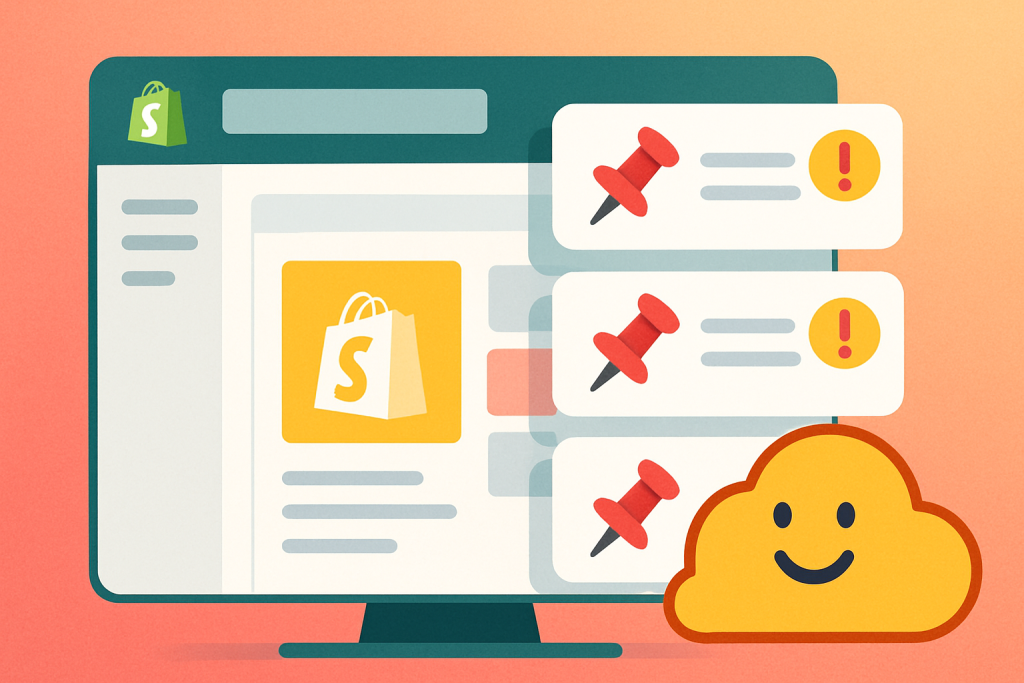In today’s competitive e-commerce landscape, standing out and driving sales requires more than just a beautiful website and compelling product descriptions. You need a direct line to your customers, a way to re-engage them effortlessly and boost conversions. That’s where push notifications come in. This beginner’s guide will show you how to leverage the power of push notifications to significantly improve your Shopify store’s performance.
What are push notifications and why are they important?
Push notifications are those little messages that pop up on your customers’ screens, even when they’re not actively browsing your website. They’re a highly effective way to stay top-of-mind, announce promotions, and remind customers about abandoned carts. Unlike email, which often gets lost in the inbox, push notifications deliver your message directly, increasing the chances of engagement.
Why are they so important for Shopify stores?
- Increased Conversions: By reminding customers about products they’ve viewed or items left in their carts, you dramatically increase the likelihood of a purchase.
- Improved Customer Retention: Regular, valuable notifications keep your brand fresh in customers’ minds, fostering loyalty and repeat business.
- Enhanced Engagement: Push notifications allow you to quickly communicate important updates, flash sales, or exclusive offers, driving immediate action.
- Targeted Messaging: With the right tools, you can segment your audience and send highly relevant messages based on browsing history or purchase behavior.
Setting up push notifications on your Shopify store
Integrating push notifications into your Shopify store is surprisingly straightforward. While you can technically achieve this with some coding knowledge, using a dedicated app like Pushloop significantly simplifies the process and unlocks a range of advanced features.
Choosing the right app (Pushloop!)
Selecting the right app is crucial. Look for one that offers features like easy setup, segmentation capabilities, automation options, and comprehensive analytics. While we won’t explicitly promote any particular app, using a well-designed and reliable app will make a significant difference in your success with push notifications. The right app will allow you to focus on strategy rather than technical hurdles.
Configuring your notifications
Once you’ve chosen and installed your push notification app, the configuration process is generally intuitive. You’ll typically need to:
- Set up your notification preferences: Define your brand’s voice and the overall style of your messages.
- Create notification templates: Design reusable templates for different types of notifications (e.g., abandoned cart reminders, flash sale announcements).
- Test your notifications: Before launching a wide-scale campaign, always test your notifications to ensure they display correctly and function as intended on various devices.
Best practices for effective push notifications
Simply sending notifications isn’t enough; you need a strategy to maximize their impact. Here are some key best practices to follow:
Segmentation and targeting
Avoid bombarding all your customers with the same messages. Segment your audience based on demographics, purchase history, browsing behavior, or other relevant criteria. This ensures that each customer receives highly relevant and personalized notifications.
Timing and frequency
Timing is everything. Consider your customers’ time zones and typical online activity patterns when scheduling your notifications. Avoid sending too many notifications too frequently, as this can lead to users disabling them.
Finding the optimal frequency is crucial and depends largely on your brand and audience. Experimentation is key here—start conservatively, monitor your results, and adjust accordingly. Consider A/B testing different frequencies to see what works best.
Measuring your success
To truly understand the impact of your push notification campaigns, you need to track key metrics. Most push notification apps provide analytics dashboards that track:
- Delivery rate: The percentage of notifications successfully delivered.
- Open rate: The percentage of delivered notifications that were opened.
- Click-through rate (CTR): The percentage of opened notifications that resulted in a click.
- Conversion rate: The percentage of clicks that led to a purchase or other desired action.
Regularly review these metrics to identify what’s working and what needs improvement. Use this data to refine your strategies and optimize your campaigns over time.
Case studies of successful push notification campaigns
While we cannot provide specific, confidential case studies due to client privacy, it is important to note that the most successful campaigns are characterized by highly targeted messaging, a clear value proposition for the customer in each notification, and a measured approach that avoids overwhelming the user.
The effectiveness of push notifications is highly dependent on context and audience. What works well for a fashion retailer might not work as effectively for a software company. Adapting your strategy based on your specific market and customer preferences is critical.
Conclusion and next steps
Push notifications are a powerful tool for boosting Shopify sales and enhancing customer engagement. By following these best practices and using a reliable app, you can significantly improve your store’s performance. Remember that consistent optimization and data-driven decision-making are key to long-term success.
Ready to start leveraging the power of push notifications for your Shopify store? Consider exploring various apps to find the one best suited for your needs and budget. A robust app will provide you with the tools to analyze your results, adapt your strategy, and continue improving your campaign’s effectiveness over time.

